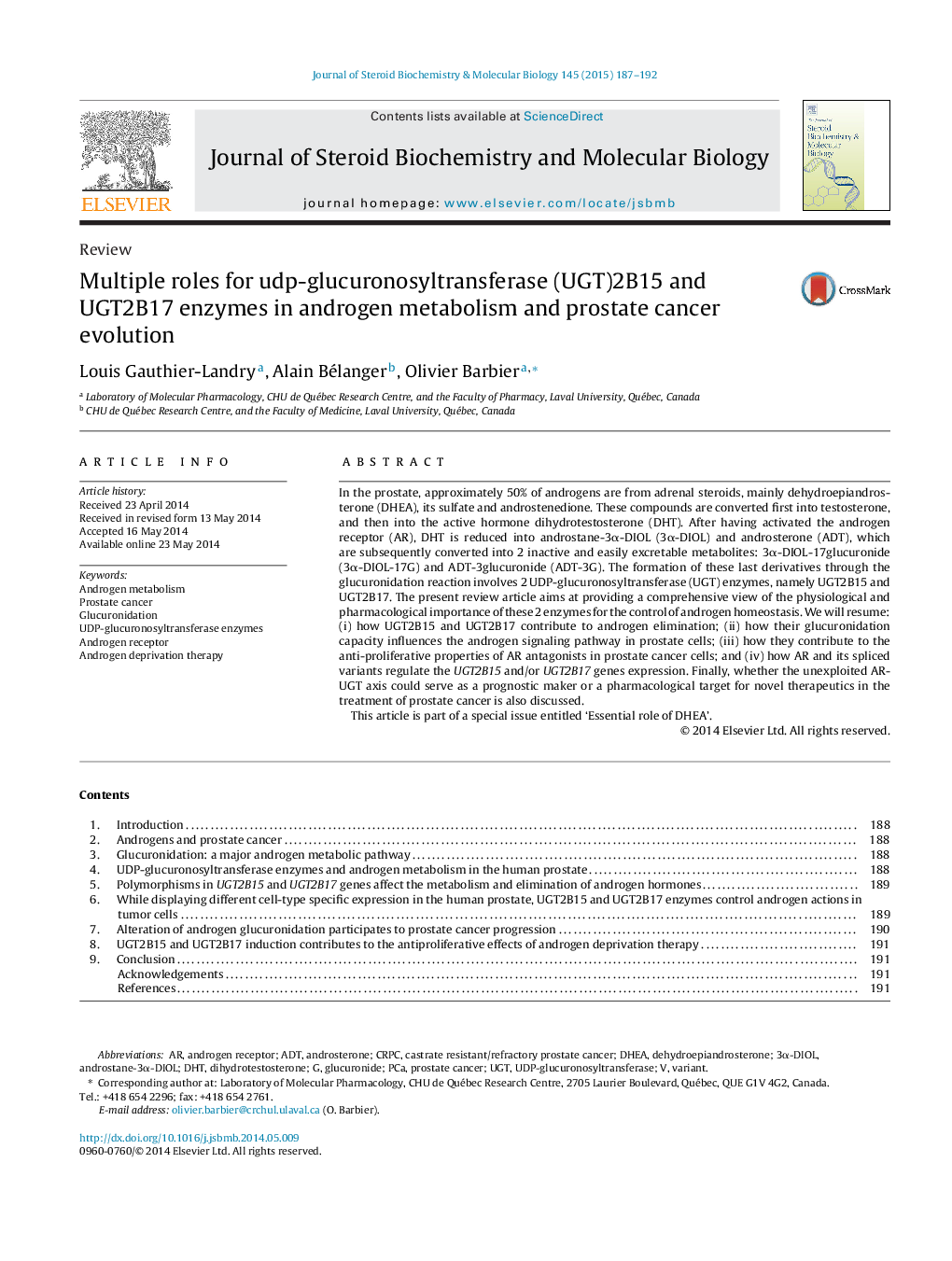| کد مقاله | کد نشریه | سال انتشار | مقاله انگلیسی | نسخه تمام متن |
|---|---|---|---|---|
| 1991458 | 1541004 | 2015 | 6 صفحه PDF | دانلود رایگان |

• Glucuronidation is the major androgen metabolic pathway in the human prostate.
• UGT2B15 and UGT2B17 enzymes control androgen inactivation in prostate cells.
• UGT2B15 and/or UGT2B17 polymorphisms have deep impact on androgen elimination.
• UGT2B15 and/or UGT2B17 activities influence prostate cancer evolution.
In the prostate, approximately 50% of androgens are from adrenal steroids, mainly dehydroepiandrosterone (DHEA), its sulfate and androstenedione. These compounds are converted first into testosterone, and then into the active hormone dihydrotestosterone (DHT). After having activated the androgen receptor (AR), DHT is reduced into androstane-3α-DIOL (3α-DIOL) and androsterone (ADT), which are subsequently converted into 2 inactive and easily excretable metabolites: 3α-DIOL-17glucuronide (3α-DIOL-17G) and ADT-3glucuronide (ADT-3G). The formation of these last derivatives through the glucuronidation reaction involves 2 UDP-glucuronosyltransferase (UGT) enzymes, namely UGT2B15 and UGT2B17. The present review article aims at providing a comprehensive view of the physiological and pharmacological importance of these 2 enzymes for the control of androgen homeostasis. We will resume: (i) how UGT2B15 and UGT2B17 contribute to androgen elimination; (ii) how their glucuronidation capacity influences the androgen signaling pathway in prostate cells; (iii) how they contribute to the anti-proliferative properties of AR antagonists in prostate cancer cells; and (iv) how AR and its spliced variants regulate the UGT2B15 and/or UGT2B17 genes expression. Finally, whether the unexploited AR-UGT axis could serve as a prognostic maker or a pharmacological target for novel therapeutics in the treatment of prostate cancer is also discussed.This article is part of a special issue entitled ‘Essential role of DHEA’.
Journal: The Journal of Steroid Biochemistry and Molecular Biology - Volume 145, January 2015, Pages 187–192